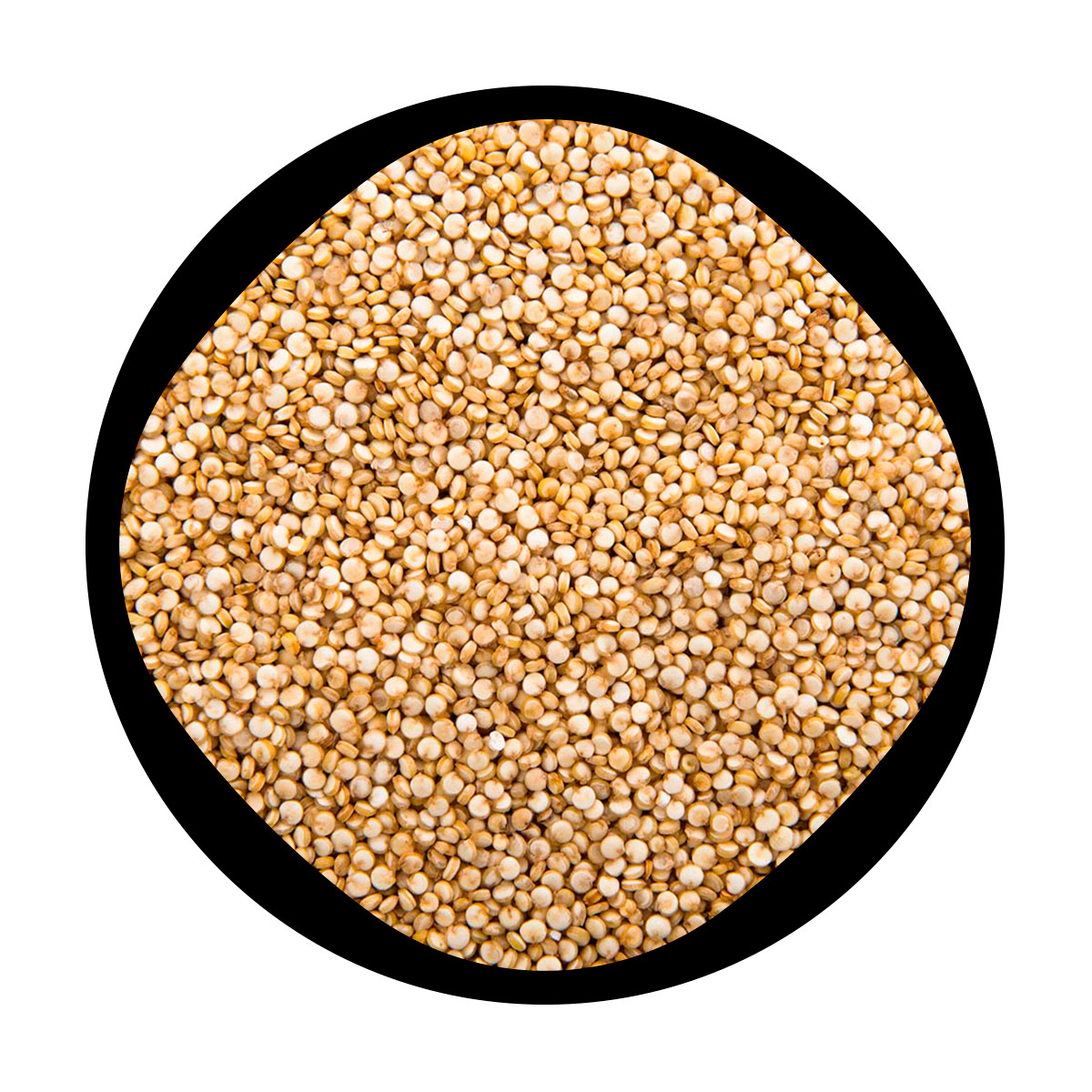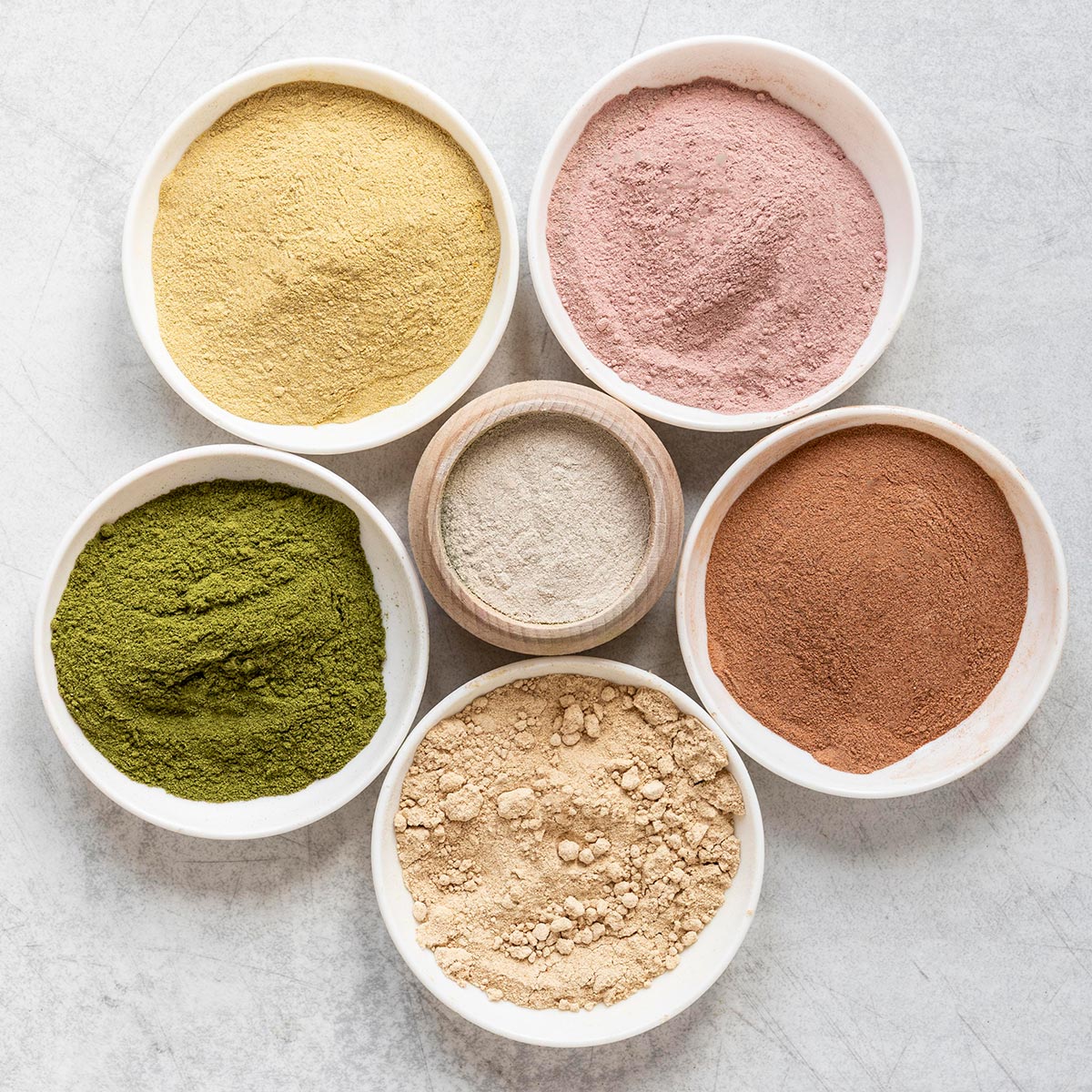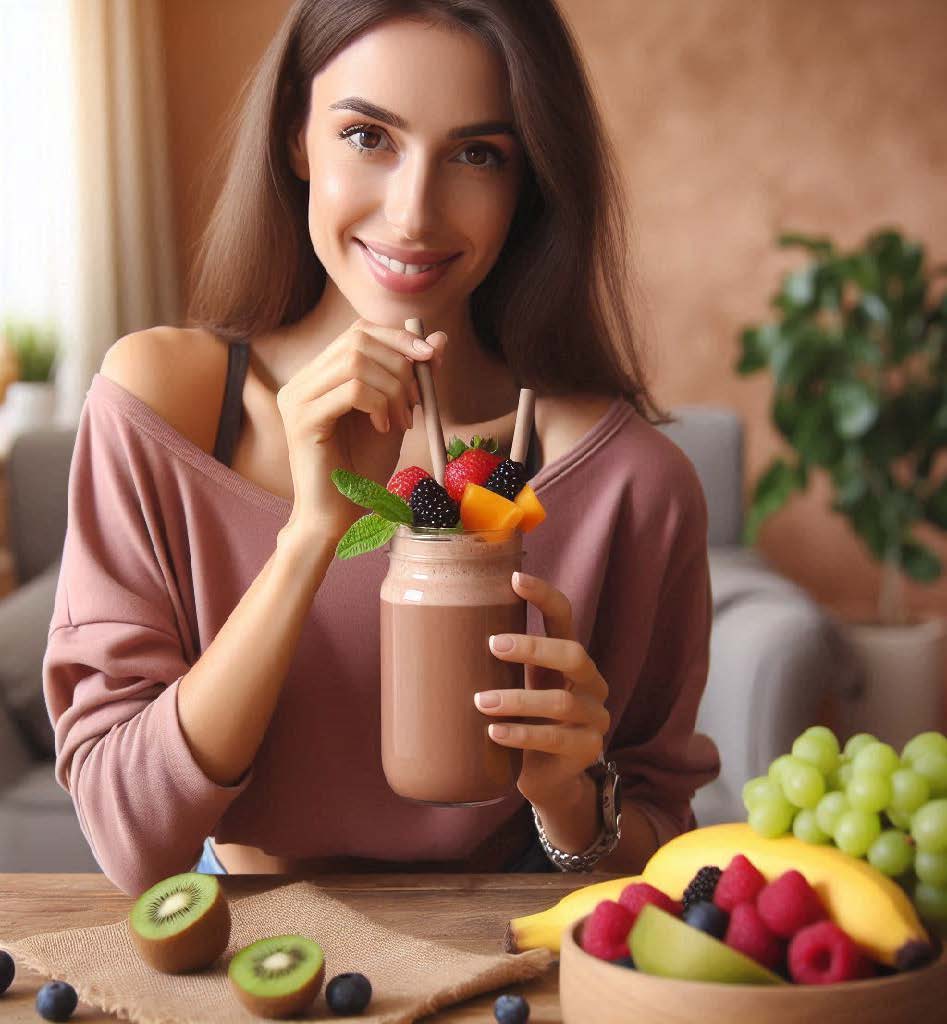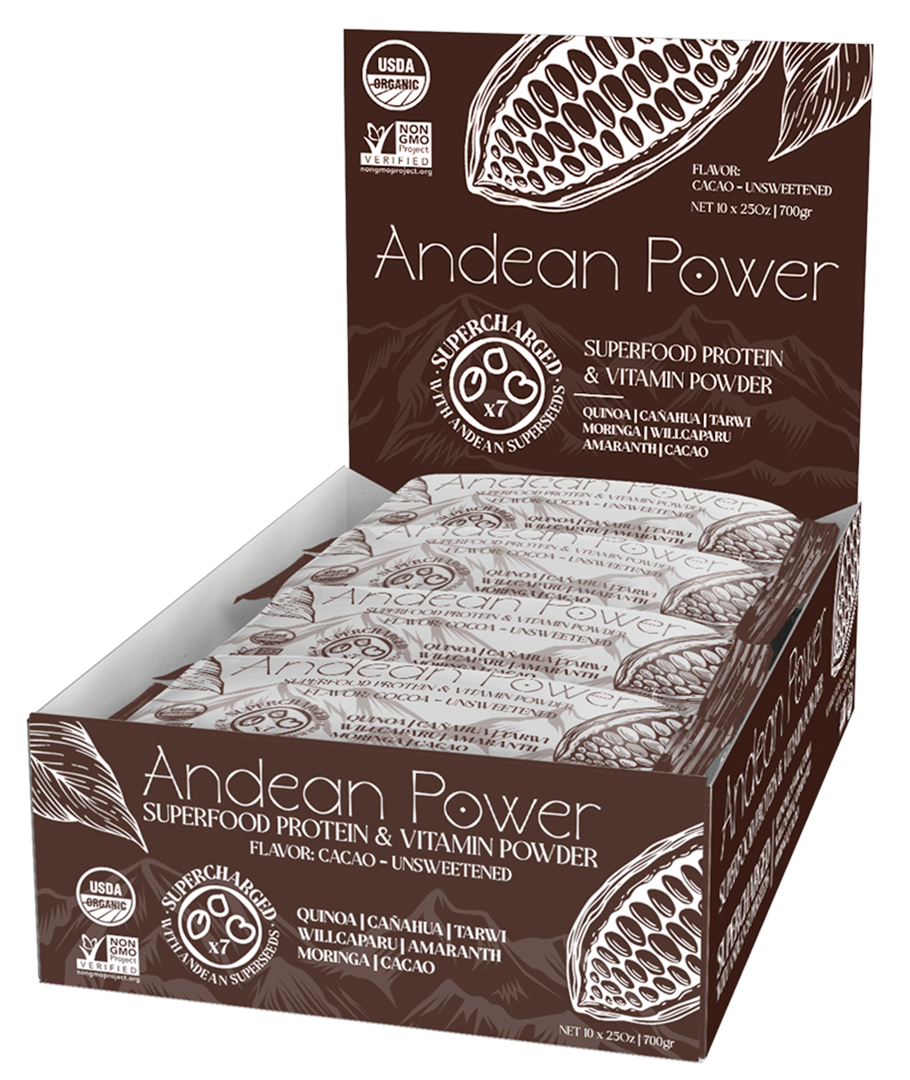From the Bolivian Andes, a powerful SEED POWERED nutritional powder comes to your home, millions of years in the making.
THE STORY
Ten years ago, Dr. Pedro Martinez had an idea - what if he mixed the most increible andean cereals to make a smoothie, or a drink that would bring an enormous amount of nutrition and health to his family?, taking advantage of the wonders that mother nature gives. And what if it was completely natural?, without any additives, strange unreadable chemichals, and was simply delicious... It took 10 years for Dr. Martinez to come up with the perfect formula, and now we bring it to you!
ANDEAN POWER, millions of years in the making, 10 years to develop, a gift from mother nature now available to you:


ANDEAN POWER is the first cereal powder that is manufactured with ONLY SEEDS, this powerful nutritional supplement
can be mixed with any emulsifier: water, milk, cream, honey, fruits, for the perfect smoothie.
A dose of 30-40 gr., is pure nutrition, and a powerful boost to your health,
immune system, and, did we say that it tastes great?
ANDEAN POWER IS A PROTEIN AND VITAMIN POWDER
SEED POWERED

SUPERCHARGED with 7 Andean Superfood seeds.
ANDEAN POWER does not only bring powerful nutrition, but it is completely natural, absolutely no additives, or strange unreadable chemichals, but it also has PRE and PRO biotic properties, regulating your digestive system. Not only it is GOOD for you, it is simply the best nutritional powder there is.
Direct from the Andes to you.


No additives, no preservatives, no strange unreadable chechichals.

Super Seed Powered, with Andean mother nature gifts.

Gluten Free, perfect fo Celiacs, as pure as it gets.

No sugar, or any artificial sweetners, you can add Stevia, or what you like.

Well, the formula took 10 years to develop, as it was a concern for Dr. Martinez to keep his family very healthy! In order to arrive the perfect formula, a team of nutritionsits and phisicians aided in the development of Andean Power.
We named the product ¨ANDEAN POWER¨, it´s quite simple, we bring the power of a SEED POWERED product, with all the power that andean seeds have for millenias helped survived populations in very hostile environments, such as the Andean region of Bolivia.
Our product is made in Bolivia, with only organic production, we made sure that the ingredients are free of pesticides, maintaining it´s purity.
ANDEAN POWER IS A PROTEIN AND VITAMIN POWDER
ANDEAN POWER is a very powerful nutritional supplement, very useful as a complementary food in hypercaloric diets and as a replacement for periods of low-calorie diets, with the advantage of being free of polyunsaturated fats, sugar and gluten.
To fully understand ANDEAN POWER, take a look at each ingredient and its extraordinary properties.
ROYAL QUINOA
Quinoa is so complete that it is considered the superfood par
excellence: A perfect balance of proteins, fats and carbohydrates, suitable for celiacs, 9 essential amino acids, and much, much more...

La Quinoa
- 23% protein.
- It contains minerals: calcium, iron and magnesium.
- It has vitamins C, E, B1, B2, niacin and phosphorus.
- Rich in amino acids that promote brain development.
- High content of omega 6.
- It is a source of soluble and insoluble fiber.
- Its glycemic index is very low.
- Suitable for gluten intolerant people. Quinoa is a naturally gluten-free pseudocereal. Thus, on the one hand it is healthier than other synthetically modified gluten-free foods and it is a perfect food for people with celiac disease.
- Perfect for weight control. Quinoa has a high fiber and protein content, but its glycemic index is very low, for this reason, it is the best option for those who are on a diet, are diabetic or want to maintain their weight and sugar levels in check.
- Helps improve intestinal transit. The high fiber content (between 10 and 16g per 100g) prevents constipation, improves intestinal transit and helps to have better digestion.
- It is an antioxidant. Quinoa is rich in quercetin and kaemferol, two flavonoids that are powerful plant antioxidants that help purify the body and improve health.
- Ideal for athletes. This pseudocereal contains the nine essential amino acids that our body needs to build muscle and recover from hard workouts, as well as 8 grams of protein per cup. A delicacy for athletes.
- Controls cholesterol levels. Quinoa contains, in addition to fiber, unsaturated lipids. Both components help control cholesterol levels in the blood and reduce the risk of cardiovascular disease.
- Natural hair mask. Mix boiled quinoa with a little olive oil and you will obtain a natural mask to strengthen and soften damaged hair.
- Skin care. Although it is good for recovering damaged hair, it is also good for dry skin. Make a homemade mask with quinoa grains boiled in a little milk. Let the mixture sit for 15 minutes and spread it over your face. Leave it on for half an hour and remove with plenty of water.
- Goodbye to migraines. The magnesium level in quinoa helps relax the walls of blood vessels and reduces blood pressure.
- Relaxing and anti-stress. A quinoa infusion acts as a relaxant and relieves everyday stress.

CAÑAHUA
Cañahua is ¨mini quinoa¨, solely native to the Andes, its sort of
Quinoa X 10 in terms of nutrition. A treasure of the Inca Empire, its ability to thrive at high altitudes and high resistance to very low temperatures Makes Cañahua a
powerful nutrition ingredient.
Cañanhua
- 65% carbohydrates.
- 19% high biological value proteins (4% more than quinoa).
- 7% fats (monounsaturated and polyunsaturated omega-6 in equal parts, with a small proportion of omega-3).
- Thanks to its high fiber content, it has a low glycemic index, making it suitable for people with diabetes.
- Due to its nutritional richness, it is suitable for taking at any stage of life and a good complement to vegan diets, for athletes and for pregnant or breastfeeding women.
- Strengthens muscles. The concentration of essential amino acids in Cañahua seeds helps build and maintain healthy muscle mass, making it an excellent supplement for people following vegan or vegetarian diets.
- Fights anemia. Abundant in iron, Cañahua has been a great ally in treating and preventing anemia in Andean populations for thousands of years.
- Improve digestion. Cañahua seeds are particularly rich in soluble fiber, which facilitates digestion and promotes gastrointestinal health. Cañahua is ideal for people with gastritis and ulcers, as it can be easily incorporated into a soft diet.
- Promote metabolic functions. Like quinoa, it is believed that the antioxidant power of Cañahua can treat and prevent diabetes, controlling cholesterol, hypertension and blood sugar, which in turn reduces the risk of cardiovascular disease.
TARWI
The Andean people use it in infusions to control colds and fevers naturally. Tarwi is so great that helps combat constipation, hair loss and parasites. Its greatest value is obtained in the form of flour.

Tarwi
- 50% protein.
- 24% carbohydrates.
- 13% vegetable fiber.
- 21.9% essential fats (omegas 9, 6 and 3).
- 7.5% minerals (Iron, Calcium, Magnesium, Potassium, Zinc).
- Tarwi also has vitamin B12 In addition to its high protein content, it also stands out for its high levels of calcium, which makes it a great food to maintain healthy teeth and bones, and it is presented as a good option for those who are lactose intolerant and for those people who seek foods of non-animal origin.
- It has a high protein content. It contains more protein than soybeans, approximately 40% per 100 gr., which makes it a super food that unfortunately is not known as it should be for outstanding properties. Regulates blood glucose. It regulates blood sugar content; this is because it has less carbohydrates than other legumes and could be helpful for diabetics.
- Unsaturated fat content. Tarwi has a high content of fat rich in omega 3, which is why its industrialization has even been proposed to produce oil on a large scale, unfortunately the process is a bit expensive for now. Natural laxative. We can use tarwi to purge our digestive system, as it is a natural laxative.
- Combats stress. Tryptophan is a substance that produces a feeling of well-being, tranquility and optimism in us, from which it follows that if we consume foods with a high tryptophan content, we can face the challenges of daily life with greater peace of mind.
- High calcium content. Its calcium content is an excellent supplement for those who want to have healthy bones and teeth. A healthy alternative for those who are lactose intolerant, and people who do not consume foods of animal origin.
- Contains fiber for good digestion. It has fiber which is necessary for us to carry out our digestive processes normally as it relieves constipation.

AMARANTH
The word "Amaranto" means "the smallest life-giving particle", because it was and continues to be the prodigious food of the past, which was reborn in the present and will prevail in the future...
Amaranth
- Vitamins A, B, C, B1, B2 and B3
- Folic acid, niacin, calcium, iron and phosphorus.
- It is one of the superfoods with the highest presence of amino acids such as lysine.
- 21.9% essential fats (omegas 9, 6 and 3).
- 7.5% minerals (Iron, Calcium, Magnesium, Potassium, Zinc).
- It provides vegetable fiber, complex carbohydrates and proteins. As a result, it has a low glycemic index (GI) and the supply of glucose to the brain is constant. In addition, as its GI is low, it is perfect for people with diabetes. The fiber content of amaranth is 6.7%, which places it above other superfoods. Therefore, it contributes to intestinal motility and the care of intestinal flora.
- It protects your bone system from osteoporosis due to the contribution of phosphorus, magnesium and calcium.
- It can regulate cholesterol levels in the blood. In addition, it is richer in fat than oats and its phenolic compounds have a high antioxidant power.
- Squalene. This substance was normally extracted from shark liver for its anti-cancer properties. But it is also an antioxidant fatty substance that has a protective effect on the intestine, the circulatory system and the skin.
- It regulates blood pressure. Cristina Mapes Sánchez, a professor at the UNAM Botanical Garden, curator of the ethnobotanical collection, who conducts research on traditional agriculture and edible plants in Mexico, has studied the knowledge, use and management of amaranth as a vegetable in the Sierra Norte of Puebla. She explained that during the digestion of proteins, peptides are released, which give amaranth nutraceutical properties that serve to prevent certain diseases such as diabetes and to regulate blood pressure.
- It prevents osteoporosis: Due to its high calcium content (higher than that of milk), it prevents osteoporosis and avoids muscle cramps. In addition, it contains phosphorus, which is essential for the correct absorption of calcium and whose deficiency can also cause fatigue.
- It reduces cholesterol. Amaranth has a diuretic action (due to its calcium, potassium and fiber content), which favors the control of blood pressure by reducing fluid retention. Furthermore, due to its omega-3 and plant sterol content, helps regulate cholesterol levels (it reduces bad LDL cholesterol and increases good HDL cholesterol) and triglycerides in the blood. Also, insoluble fiber helps eliminate cholesterol through the feces, thus reducing the absorption of cholesterol ingested in the diet and eliminating bile salts that intervene in digestion and that contain endogenous cholesterol. All this, together with its high antioxidant power, makes it a highly recommended food to prevent cardiovascular diseases.
- It helps to lose weight. It is a good ally for losing weight, since its large amount of fiber increases the feeling of satiety. Furthermore, since it is made of vegetable proteins, it does not mean extra calories. This grain releases carbohydrates but, unlike simple ones, its absorption in our body is slow, that is, during the day we can take its calories to convert them into energy and thus be able to take full advantage of its nutritional content. This property is perfect for sports people or those who train in the gym, since they will get the energy necessary to carry out the training. Thanks to the fact that it is absorbed slowly, you will feel more satiated throughout the day, thus avoiding snacking between meals.
- It has anti-cancer properties. Amaranth is a functional food that contains flavonoids and biopeptides with beneficial properties for the health of people who consume it. For example, rutin is a flavanol described as the phytochemical with the greatest antioxidant power, and it also can inhibit the development of cancer.
- It is suitable for celiacs. It is necessary to understand that gluten, according to information from the Federation of Celiac Associations of Spain, is a protein that can be found in some cereals, but NOT in amaranth...
- It prevents diabetes. Due to its high fiber content, it regulates the absorption of sugars from the diet. And since its carbohydrates are slowly absorbed (low glycemic index), it is recommended in diets for diabetics.
MORINGA
Originally from India, Moringa, also called the ¨Miracle Tree¨ has been used in medicine to prevent and treat more than 300
diseases: Including anemia, anxiety, asthma, bronchitis, headache, sore throat, hypertension, ulcers, and much more.

Moringa
- Proteins: They are vital for repairing cells and producing new ones. Son vitales para reparar células y producir de nuevas.
- Carbohydrates: It is the main source of energy for our body.
- Vitamins A and C: Vitamin A is essential for maintaining vision, the immune system and the reproductive system, and vitamin C protects us from damage from free radicals.
- Sodium: Important for maintaining the proper functioning of the nervous and muscular system, as well as controlling digestion.
- Iron: This mineral contributes to the production of red blood cell proteins to transport oxygen.
- Calcium: Keeps our bones strong.
- Fibers: Essential for our digestive health.
- Reduces blood pressure: Its components, such as polyphenols and flavonoids, help lower blood vessel pressure and ensure good blood circulation.
- Reduces anxiety and depression: It helps treat anxiety and depression.
- Protects and nourishes hair and skin: Due to the proteins and vitamins A and C it contains, moringa seed can be a great ally against free radicals. It enhances the nutrition and care of our hair and skin thanks to its moisturizing and detoxifying components.
- Purifies water: Due to its antibacterial properties, moringa seeds can prevent bacterial growth in water, incredible huh?
- Prevents anemia: The moringa plant contains levels of iron in its leaves that contribute to the creation of red blood cells and hemoglobin, among others, which help prevent anemia.
- Controls infections: Thanks to its anti-inflammatory properties.
- Controls and improves breathing: It helps create hemoglobin, essential for carrying oxygen to the blood.
- Controls glucose levels: Thanks to the amount of hemoglobin and proteins, moringa helps control glucose and blood sugar.
- Helps reduce cholesterol and blood pressure.
- Prevent inflammation.
- Help the body convert fats into energy.
- Reduce fatigue and improve energy levels.

WILKAPARU
"Willkaparu" is one of the 200 varieties of corn produced
in Bolivia, it has very high calcium and carbohydrate content and is consumed in the form of juices, Wilcaparu fluor is very sought for in the Andean region, thanks to it's great taste an nutrition.
Wilkaparu
- Wilkapuru is rich in carbohydrates, vitamins A, B1, B2, B3, B5, B6, B7, B9, B12, E, D, K and C, fiber and mineral salts such as potassium, magnesium, iron, calcium, zinc, sodium and phosphorus.
- It is also rich in calcium, proteins, calories, fats and purine.
- It contains vitamin B1 or thiamine, which are the names given to this substance capable of preventing or curing the clinical symptoms known as “beri-beri”, a nutritional disease. Thiamine participates in energy metabolism.
- Vitamin B2 or riboflavin, which intervene in various reactions related to the metabolism of carbohydrates, proteins and fats.
- Niacin or B3 (preventive of pellagra) niacin also produces the metabolism of tryptophan.
- Folic acid or B9 The functions of folic acid are necessary for the biosynthesis of purines and thymine, which explains its fundamental role in cell growth and reproduction. Its deficiency produces megaloblastic anemia.
- It is classified as a gluten-free cereal. It is highly appreciated for its high nutritional value and has also been traditionally recommended to people with celiac disease.
- Antioxidants
- Corn is a source of antioxidants that fight free radicals and cellular aging.
- Filling, satiated.
- Rich in fiber and carbohydrates, corn is filling and helps control our appetite.
- Good for the brain
- Rich in folic acid and other vitamins, corn is an ally of various brain functions.
- Takes care of our cardiovascular health
- The vitamin B1 contained in corn decreases homocysteine and, therefore, also reduces the risk of suffering a cardiovascular attack.
- Recommended for pregnant women.
- Rich in folic acid, it is highly recommended for pregnant women and those who are breastfeeding.
CACAO
Cocoa is a tree that produces a fruit of the same name and since its discovery more than one hundred medicinal uses have been developed, to cure or relieve fatigue, fever, heart
problems, keep in mind, it´s not COCOA, it's pure CACAO.

Cacao
In some cases, there are important differences between CACAO and COCOA. Some experts use “cacao” for the pods, beans and ground-up contents of the beans, reserving “cocoa” for the powder left after pressing the fat out of the ground beans. To make cocoa powder, the liquor — which is roughly half fat in the form of cocoa butter — is pressed to remove most of the fat. To make chocolate, the liquor is often mixed with other ingredients, including vanilla, sugar, more cocoa butter and milk.
We use Cacao, processed for purity.
Cacao is a tree from America that produces a fruit of the same name that it is mostly used for the chocolate industry. Its use dates back to the time of the Mayans, Aztecs and Incas, and since then it has been used for both nutritional and medical purposes. According to the European Food Information Council (Eufic), more than one hundred medicinal uses of CACAO have been developed since its discovery. Treatments that use the resources of the cocoa tree serve to cure or relieve fatigue, extreme thinness, fever, heart problems, anemia or kidney and intestinal problems.
Myths
Due to the high amount of fat that cocoa provides, its consumption is often linked to the development of problems such as acne, migraines or increased cholesterol. However, according to the Nutritional Study of Cacao and Derived Products of the Cocoa and Chocolate Institute, there are no studies that have shown that the relationship between these aspects is true.
Cocoa is not addictive either.
In 2002, a team of Catalan scientists determined that for cocoa or chocolate to produce physical dependence, at least 15 kilos should be consumed each day.
- Pure Cocoa contains phosphorus, magnesium, iron, potassium, calcium, zinc, copper, manganese, vitamins A, B1, B2, B3, C, E, pantothenic acid, thiamine and riboflavin, caffeine, theobromine and tannins, natural antioxidants, etc.
- 100 grams of dark chocolate provide a percentage of the recommended daily amount:
- 100 gramos chocolate negro aportan un porcentaje de la cantidad diaria recomendada:
- 20% Iron
- 27% Potassium
- 30% Phosphorus
- 25% Copper
- 13% Calcium
- 33% Magnesium
- Its high antioxidant content makes Cacao a very beneficial food for the heart, as it dilates the arteries and improves blood flow. But remember that Cacao is healthier and contains more of these compounds, the more Cacao is less processed the better. We aim for purity in our Cacao.
- The flavonoids it contains improve blood flow in the brain, which will improve your ability to concentrate and your memory.
- Eating and smelling chocolate stimulates the release of endorphins, responsible for the feeling of well-being and pleasure; in the case of its aroma, it increases theta brain waves that cause relaxation.
- It contains nutrients that promote the formation of beneficial bacteria for your body.
- Improves mood. Cocoa is rich in theobromine, caffeine, phenylethylamine and tyramine, which is a precursor of tryptophan, which in turn is a precursor of serotonin, which is a neurotransmitter related to the regulation of mood, heart rate, sleep and appetite. Cocoa can help improve mood and combat the signs and symptoms of depression and anxiety.
- Prevents thrombosis. Cocoa helps prevent the appearance of thrombosis because it contributes to improving blood flow, which reduces the risk of blood clot formation thanks to its flavonoid content.
- Helps regulate cholesterol. Cocoa is rich in antioxidant substances, helping to regulate circulating cholesterol levels, which helps prevent fatty deposits in blood vessels, preventing the formation of atheroma plaques and the development of cardiovascular diseases.
- Prevents anemia. Cocoa is rich in iron and, therefore, its regular consumption can help prevent anemia, since iron is essential for the formation of hemoglobin, a component of red blood cells responsible for transporting oxygen to the organ and which is normally found in lower quantities in cases of anemia.
- Reduces the risk of diabetes. Some studies indicate that cocoa could slow down the digestion of carbohydrates at the intestinal level, as well as protect the cells responsible for insulin production in the pancreas and improve insulin secretion. In addition, it could also reduce insulin resistance, which contributes to reducing the risk of diabetes.
- Prevents dementia. Cocoa is rich in theobromine, which is a compound with vasodilatory activity, which favors blood circulation to the brain, helping to prevent neurological diseases such as dementia and Alzheimer's, for example. In addition, cocoa is rich in selenium, a mineral that helps improve cognition and memory.
- Regulates the intestine. Cocoa is rich in flavonoids and catechins that reach the large intestine, which could increase the amount of bifidobacteria and lactobacilli, which are healthy bacteria that exert a prebiotic effect, helping to improve intestinal function.
- Helps reduce inflammation. Being rich in antioxidants, cocoa is able to reduce cell damage caused by free radicals and inflammation. In addition, some studies indicate that cocoa consumption favors the reduction of the amount of C-reactive protein in the blood, which is an indicator of inflammation.
- Helps control weight. Cocoa helps in weight control because it helps reduce the absorption and synthesis of fats. In addition, by ingesting cocoa it is possible to have a greater feeling of satiety, since it helps regulate insulin, however this benefit is mainly associated with dark chocolate and not with milk or white chocolate, since they are rich in sugar and fat and low in cocoa.
- Cocoa powder should not be consumed together with products rich in calcium, such as milk, cheese and yogurt, because it has oxalic acid, a substance that decreases the absorption of calcium in the intestine.
- Lowers blood pressure. Cocoa can also help reduce blood pressure, since it improves blood vessels by influencing the production of nitric oxide, which is related to the relaxation of these vessels.
THE DEBATE
NUTRITION FACTS OF ANDEAN POWER

The formula of ANDEAN POWER is extremely powerful in nutritional terms.
BECAUSE it is SEED POWERED, Andean Power is a food supplement of great nutritional power, which not only competes with similar products but in many cases the minimum amounts of the daily value indexes surpass them.
A portion of only 35gr provides 11% of the daily protein requirement and more than 15% of fiber (in a normal calorie diet) with a minimum percentage of fats and carbohydrates, additionally the content of vitamins B3, C and D and vital minerals for maintaining good health such as Magnesium and Iron are very important. Andean Power is simply a gift from mother earth.

100% Made in Bolivia

with Bolivian Super Seeds
| TABLA NUTRICIONAL SACHET DE 35gr |
|---|
| Porción | 35gr |
| Calorías por porción | 105Kcal |
| %VDR | |
| Proteínas (gr) | 11 |
| Grasas Totales (gr) | 3 |
| Carbohidratos (gr) | 6 |
| Fibra (gr) | 16 |
| Fósforo (gr) | 6 |
| Calcio (gr) | 7 |
| Magnesio (gr) | 19 |
| Hierro (gr) | 20 |
| Potasio (mg) | 6 |
| Niacina Vit. B3 (mg) | 4 |
| Ácido Ascórbico Vit. C (mg) | 8 |
| Alfa Tocoferol Vit. E (mg) | 14 |
| TABLA NUTRICIONAL SACHET DE 100gr |
|---|
| Porción | 100gr |
| Calorías por porción | 301Kcal |
| %VDR | |
| Proteínas (gr) | 33 |
| Grasas Totales (gr) | 7 |
| Carbohidratos (gr) | 16 |
| Fibra (gr) | 46 |
| Fósforo (gr) | 16 |
| Calcio (gr) | 20 |
| Magnesio (gr) | 53 |
| Hierro (gr) | 56 |
| Potasio (mg) | 16 |
| Sodio (mg) | 1 |
| Cafeína (mg) | |
| Tiamina Vit. 1 (mg) | 1 |
| Riboflamina Vit. B2 (mg) | |
| Niacina Vit. B3 (mg) | 10 |
| Ácido Ascórbico Vit. C (mg) | 24 |
| Alpha Tocoferol Vit. E (mg) | 39 |


Manufacturer
Located in La Paz, Bolivia Mixed Nutritional Power Industries S.A., is a company estblished in Bolivia, where the supply of the Bolivian Super Seeds are produced by thousands of farmers. Our company aids the supply chain, with fair trade increasing much needed revenue for them.

Sales
Based in Salt Lake City, Utah, United States, Business Intelligence & Market Development Inc. is the sales arm of Mixed Nutritional Power Industries S.A. BIMD as a sales arm of Andean Power, makes sure that inventory is always available so you can enjoy Andean Power without supply interruptions.

















